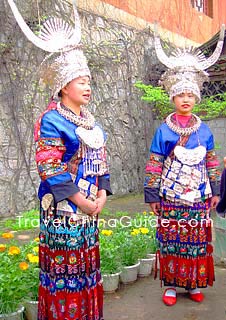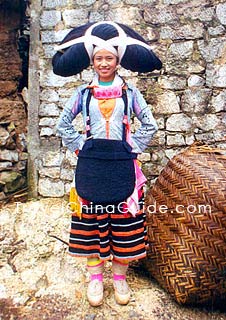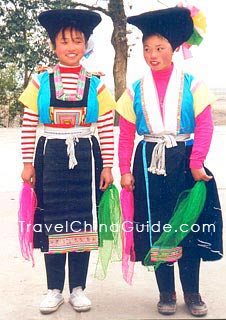Miao Nationality
Miao ethnic group has a population of 8,940,116 which is larger than most of minority groups in China. After immigration in a long history, today they live mainly in Guizhou, Yunnan, Hunan, Hubei, Hainan Provinces and the Guangxi Zhuang Autonomous Prefecture. They are divided into several branches, such as Black Hmong, White Hmong, and Striped Hmong.
Their language, which belongs to the Miao-Yao group of the Sino-Tibetan phylum, has developed into three dialects: the dialect of western Hunan Province, the one of eastern Guizhou Province and the one of ChuanQianDian (Sichuan, Guizhou and Yunnan). Due to a long time living with the Han and other people, they can also speak the Chinese, Dong and Zhuang languages. They have been writing their own Miao language based on Latin since 1956.
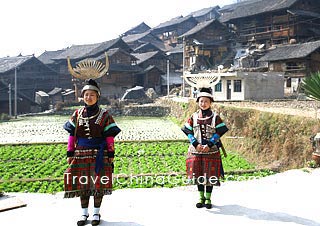 |
| A Miao Village in Guizhou |
The staple food is rice. Other dishes are meat and acidic soups. Pickled vegetables, hot seasonings and home-made wine are common at the table. Glutinous rice becomes a must during festivals and celebrations.
They are very skilled at handicrafts, such as embroidering, weaving, paper-cutting, batik, and jewelry casting. The Miao embroidery and silver jewelry are delicate and beautiful. From hats, collars, and cuffs to skirts and baby carriers, the patterns on their clothes are extremely colorful, complicated but with clean lines. Girls of around seven will learn embroidering from mothers and sisters, and when they become teenagers, they are quite deft.
|
|
|
Clothes are diverse across regions. Men wear short coats and trousers, while women decorate themselves with very dainty and dazzling skirts and jewels. On their skirts, there are many patterns taking themes from life such as flowers, birds, etc. One of the most attractive, pleated skirts has as many as forty layers!
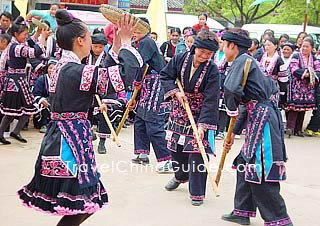 |
| New Rice Tasting Festival |
The New Rice Tasting Festival is worth mentioning. To express their gratitude for the harvest, they will stream the newly ripe rice, brew wine with new rice, cook dishes with newly-picked vegetables and freshly caught fish.
The Lusheng dance is a unique musical performance of the Miao ethnic minority during nearly every celebration. While playing the lusheng, a kind of wind instrument, they dance in demanding patterns, and sing to each other.
Miao Minority Dance
Bagpipe Dance
Miao Festival Dance
Video of Miao People
Yi Bai Hani Bouyei Dai Zhuang Dong Tujia Yao
- Last updated on Nov. 03, 2021 -
